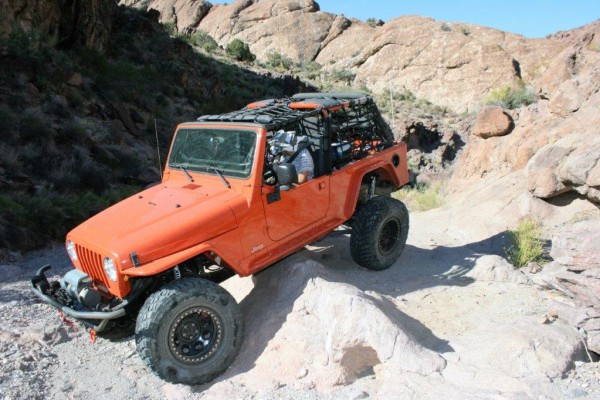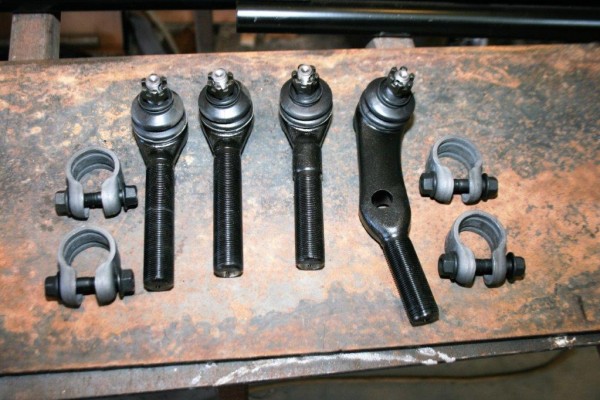It’s much more difficult to bend a strong straight shaft than a strong bent shaft.
That’s the reasoning for replacing your curved OEM Jeep tie rod with a straight tie rod and drop link kit from Rugged Ridge. This heavy-duty steering kit will prevent your tie rods from bending out of shape when four-wheeling with larger tires. Best of all, it’s an easy, bolt-on solution, making it one of the easiest upgrades you’ll ever perform on your 1997-2006 Wrangler TJ/LJ.
It typically takes about an hour to install this kit unless you have to make a custom bracket for the stabilizer, as we did for our Wrangler. The stabilizer normally uses the OEM track bar mount on the front axle. The kit includes a specially designed bolt that replaces the track bar bolt and then secures the end of the stabilizer, but you can check out our photos for suggestions if you have to fabricate a custom mount. If your Wrangler has an incipient wobble—or even a full-out death wobble—you’ll also want to add the heavy-duty ORV stabilizer kit.
If your stock height or lifted Jeep spends time wandering across a rocky stream, slipping and sliding into the backwoods, or slopping across a deep muddy pothole, you should seriously consider upgrading your steering with this pair of kits.
Think of it as preventative maintenance—you’re correcting a problem before it occurs!



















[…] Download Image More @ http://www.onallcylinders.com […]